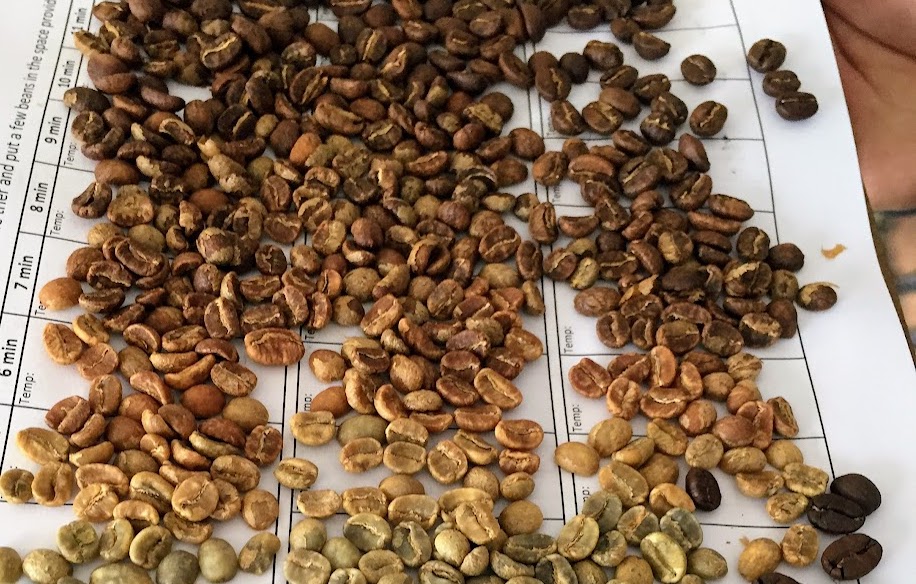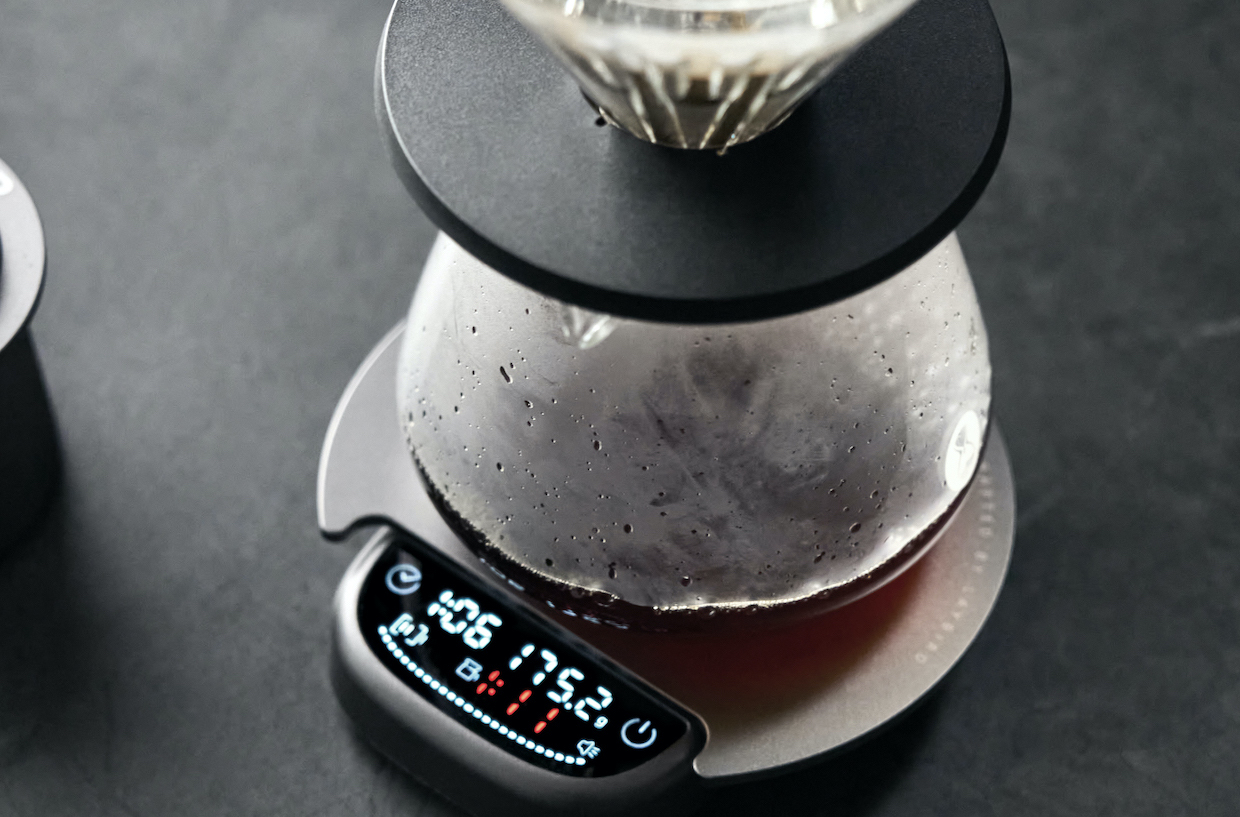The cleanliness of a coffee shop makes a huge first impression on customers. While cleanliness shapes a cafe’s reputation from a customer’s perspective, the unseen practices behind the bar have far broader implications for equipment longevity, coffee quality, and customer and staff health.
Regularly cleaning all the equipment in a coffee shop can seem overwhelming, but it is a non-negotiable for running a successful business. Coffee equipment marred with coffee residue, limescale, and milk buildup can, at best, turn customers off and, at worst, escalate into a food safety nightmare.
To learn about best practices for cleaning coffee equipment, I spoke with Nastasia Pavlis and Jason Bond at Cafetto and Dominick Majdandzic at White Horse Coffee. Read on for their insight on how to develop regular and fail-safe cleaning procedures.
You may also like our article on why equipment longevity needs to be a priority for coffee shops.


The importance of regular equipment cleaning procedures
One of the most crucial yet often overlooked factors in extracting great espresso is the use of clean equipment. Using pristine espresso machines, batch brewers, and grinders helps best express the complex, delicate flavours of coffee that old grounds and milk residue can easily overpower.
Build-up of stale grounds and oils can also compromise machine performance and longevity. For example, coffee fines and oils stick to the ridges of grinder burrs, and can cause blockages if left to accumulate.
Regular cleaning practices not only keep equipment in excellent working order but also prevent health and safety risks that coffee shops can’t afford to ignore. The constant moisture, milk residue, and coffee oils that are inevitably produced in coffee equipment create an ideal environment for microbial growth. A diversity of bacteria can breed in coffee equipment, posing a risk to the health of customers and staff and resulting in failed health inspections.
With already razor-thin margins and a highly competitive market, specialty coffee shops cannot afford to use unclean equipment. Fortunately, maintaining cleanliness is a cost-effective investment.
Matching beverage quality with cleanliness
Specialty coffee shops invest extensive time and money curating exceptional beverages, training stellar baristas, and purchasing premium equipment. Equal investment should be directed towards cleaning so that clogged, corroded, or broken machines don’t ultimately negate all of the above.
Thorough cleaning regimens should include cleaning solutions designed specifically for coffee shops. Cafetto’s product development, for instance, is guided by three key principles: performance, safety, and sustainability.
“We deliver products that coffee professionals can trust from every angle – products that perform and protect to the highest standard, are safe to use, and support the fast-paced nature of hospitality environments,” says Nastasia Pavlis, the brand manager at Cafetto.
She explains that their products undergo rigorous internal and external testing to meet globally recognised certifications such as Australian Certified Organic, Halal, Kosher, and National Science Foundation.
Notably, the rising demand for eco-friendly cleaning products in the coffee industry means café owners are seeking cleaning solutions with organic and biodegradable ingredients that minimise risks to human health and the environment.
Cafetto’s products, for example, contain biodegradable surfactants and are free from genetically modified ingredients and phosphates. The EVO Espresso Machine Cleaner delivers cleaning power without damaging internal components, and Grinder Clean is the industry’s first and still-leading organic-certified grinder cleaner.


How can coffee shops implement rigorous cleaning protocols correctly and consistently?
“Developing rigorous cleaning standards starts with a solid foundation of education, clarity, and commitment,” Nastasia explains.
She elaborates that coffee shops should first establish a structured cleaning protocol tailored to their specific equipment, beverage offerings, and workflow. These protocols must align with the equipment manufacturers’ recommendations and best-practice hygiene standards in the coffee industry.
Next, effective barista training is essential for café operators to uphold the highest standards.
“A documented and visible cleaning schedule, broken down into daily, weekly, and monthly tasks, is absolutely essential for staying on top of cleaning requirements. It’s one of the simplest and most effective ways to build consistency across the team,” Nastasia says.
Each task should clearly outline the correct cleaning product, dosage, and contact time.
“Nothing is ever a guesswork game – always take the time to explain the ‘why’ as well as the ‘how’ to your staff,” she adds. “That’s how you turn good habits into long-term standards.”
When implementing best practices for coffee equipment maintenance, Dominick Majdandzic, the co-founder of White Horse Coffee in Sydney, Australia, advises that baristas should be prepared to get their hands dirty.
“There simply is nothing like grabbing a cloth and sticking it deep into the crevasse of the coffee machine and wiping and scrubbing down the coffee grind, oil, and murk,” he tells me. “Most tasks can be apparent from getting down low and looking up to see other surfaces needing cleaning.”
Prominent coffee professional James Hoffman distills coffee machine maintenance down to the “finger test,” where a finger is wiped across coffee equipment – portafilters, groupheads, grinder hoppers and burrs, steam wands, etc. – to ensure it leaves no significant residue. If you can see or feel the residue on your finger, you can most likely taste the bitter, harsh notes it imparts in the coffee.


Implementing cleaning schedules in coffee shops
Cafe owners and baristas may find it less intimidating to break down cleaning routines on a calendar. Every coffee shop will implement variable cleaning regimens based on local water quality, sales volume, and the thoroughness with which baristas carry out daily cleaning.
However, James Hoffman, Dominick, and other coffee professionals agree, more or less, on general timeframes for implementing specific protocols.
After every use
- Purge the espresso machine grouphead for a few seconds after pulling a shot.
- Purge the steam wand for a few seconds and wipe it with a cloth. Replace cleaning rags two to three times a day.
- Thoroughly rinse pitchers after every use.
- Wipe down drip trays and countertops whenever milk or coffee is spilled.
Being diligent about all of the above will significantly extend the time necessary between deep cleans.
Daily closing tasks
- Clean groupheads using espresso machine cleaner, such as Cafetto’s EVO, by inserting a blind filter basket into the group head and following the machine’s cleaning cycle.
- Soak portafilters in espresso machine cleaner for ten minutes.
- Scrub shot glasses and all serving vessels with hot water, detergent, and sanitiser.
- Empty the hopper of coffee beans overnight and wipe down the external casing of the grinder.
- Clean grinder hoppers and exit shoots with a vacuum or brush. At least every three days – the time when coffee goes stale – wash the hopper with detergent and run specialised grinder cleaners through the burrs.
- Clear drip trays, drains, and hoses to avoid clogs.
Monthly and yearly deep cleans
- Clean milk lines. White Horse Coffee uses Inverso milk jug and crockery cleaner to wash milk jugs monthly, and ceramic cups and teapots quarterly.
- Descale espresso machines, batch brewers, carafes, and kettles every six to 12 months, depending on how strong a cleaner you use and the minerality of your water.
Limescale, the buildup of calcium carbonate naturally found in hard water, can damage machines and shorten their lifespan. Alternatively, the acidity of soft water can corrode and damage equipment.
Consider installing a filtration system to regulate your water minerality. Otherwise, descaling entails using an acid cleaner to break down the lime; you can invest in specialised descalers to reduce the chance of corrosion.
Upholding high standards
Ultimately, what constitutes “clean enough” varies for every café, but it should never stray from regulations regarding food safety and employee and customer health.
“Working across 75 countries, we’ve seen a wide range of cleaning standards shaped by local regulations, cultural practices, equipment usage, and climate,” says Jason Bond, the Deputy General Manager at Cafetto. “The end goal – clean, safe, high-performing coffee equipment – is shared globally, and cleaning products like Cafetto offer the path to achieving it.
“We’ve also seen variations in water quality, climate, and usage patterns that influence how often certain cleaning tasks need to be done. For instance, high-humidity environments may require more frequent attention to mould prevention, while areas with hard water need robust descaling routines,” he adds.
Cleanliness at competitions
Upholding such high standards is also crucial at competitions. Cafetto was the Official Cleaning Product Sponsor of the World Barista Championship, a competition that sets the highest standards in specialty coffee, from 2008 to 2023.
“In an arena where precision, fairness, and cleanliness are non-negotiable, our products helped ensure equipment operated at its absolute best, removing variables and allowing baristas to focus solely on their performance,” Jason says. “Looking ahead, we’re excited to expand our support of the specialty coffee community through a new partnership with SCA UK, where we will serve as the official cleaning product and supplies sponsor for all UK Coffee Championships from 2025 to 2027.
“This partnership reinforces our belief in nurturing local talent and raising standards at every level of the industry.”


Specialty coffee prides itself on precision and quality, so overlooking the role of deep cleaning equipment is a misstep.
Investing in high-quality cleaning products and implementing regular routines isn’t just about maintaining machinery; it’s a strategic investment in customer satisfaction, staff safety, and the exceptional coffee experience.
Enjoyed this? Then read our article on why serving excellent espresso means using clean equipment.
Perfect Daily Grind
Please note: Cafetto is a sponsor of Perfect Daily Grind.
Want to read more articles like this? Sign up for our newsletter!











